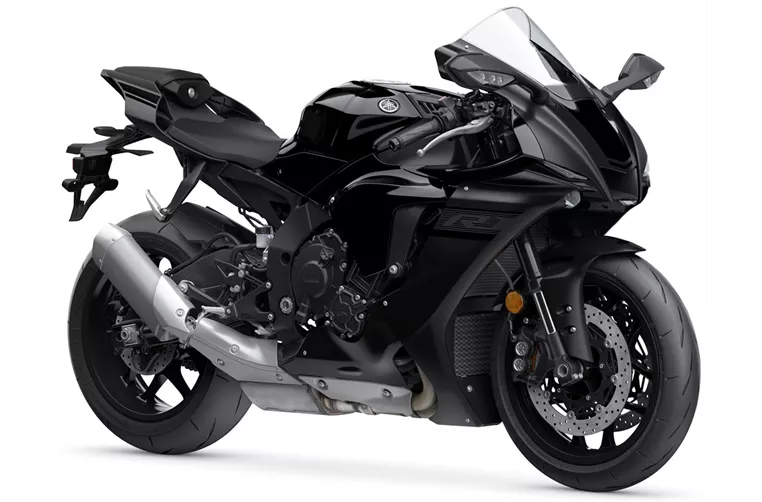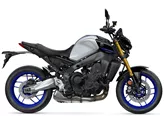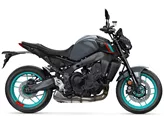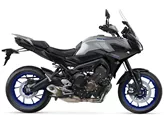Yamaha MT-09 2017 vs. Yamaha R1 2020

Yamaha MT-09 2017
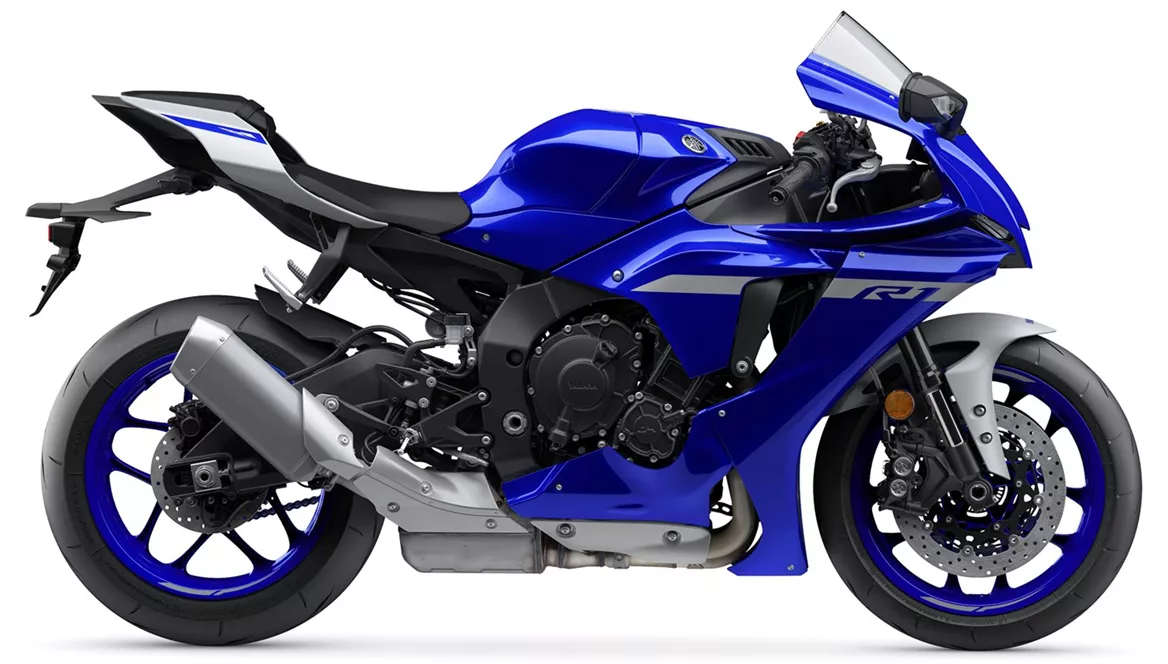
Yamaha R1 2020
Vue d’ensemble - Yamaha MT-09 2017 vs Yamaha R1 2020
The Yamaha MT-09 2017 and the Yamaha R1 2020 are two different models with distinct features and specifications.
Starting with the engine and drive train, the Yamaha MT-09 2017 is equipped with a 847cc engine that produces 115 horsepower and 87.5 Nm of torque. It has a bore of 78 mm and a stroke of 59.1 mm, with a compression ratio of 11.5. The bike has 3 cylinders and 4 valves per cylinder, with a DOHC configuration. The cooling system is liquid-based. On the other hand, the Yamaha R1 2020 has a more powerful 998cc engine that generates 200 horsepower and 112.4 Nm of torque. It has a larger bore of 79 mm and a shorter stroke of 50.9 mm, resulting in a higher compression ratio of 13. Similar to the MT-09, the R1 also has 4 valves per cylinder and a DOHC configuration, with liquid cooling.
In terms of suspension, both bikes feature upside-down telescopic forks at the front. The MT-09 2017 has an Öhlins suspension, which provides an extreme enhancement to the bike's performance. On the other hand, the R1 2020 has a standard suspension setup, which is stable and reliable.

Yamaha MT-09 2017
Both bikes have an aluminum frame, but the MT-09 2017 has a twin-tube frame type, while the R1 2020 has a Deltabox frame type. The twin-tube frame of the MT-09 offers excellent stability and maneuverability, while the Deltabox frame of the R1 provides a wonderfully noble overall impression.
In terms of brakes, both bikes have double disk brakes at the front. The Yamaha MT-09 2017 is equipped with a Magura HC3 radial brake pump, which works divinely and offers excellent braking performance. However, the Yamaha R1 2020's brakes are not 100 per cent satisfactory on the race track, indicating a slight weakness in this area.
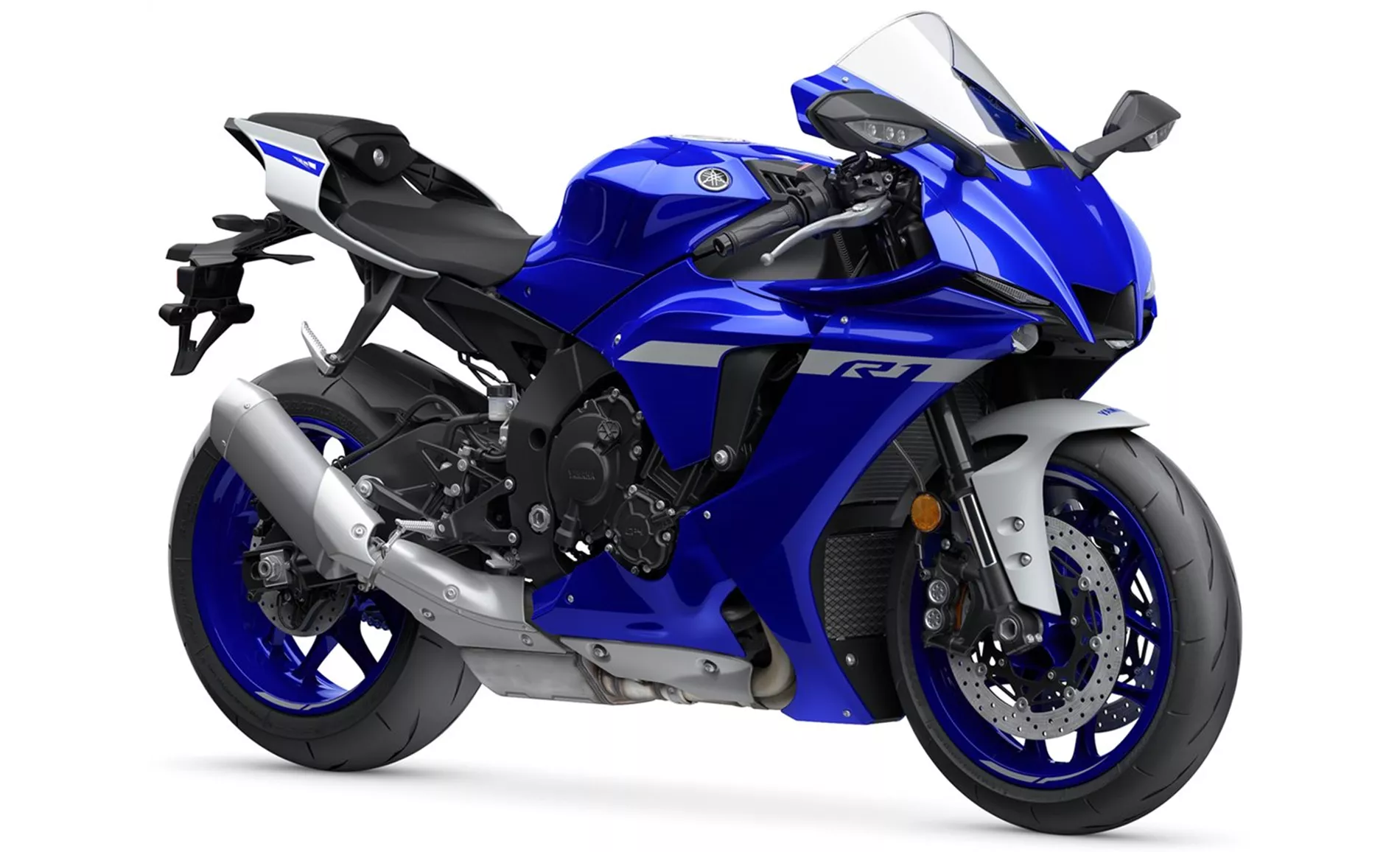
Yamaha R1 2020
Both bikes come with advanced rider assistance systems. The MT-09 2017 features ABS, Quickshifter, and Traction control, while the R1 2020 offers Launch-Control and Traction control. The R1's electronics are of high quality and provide a clean response, enhancing the overall riding experience.
In terms of dimensions and weights, the MT-09 2017 has a wheelbase of 1440 mm and a seat height of 815 mm. It has a kerb weight of 193 kg and a fuel tank capacity of 14 liters. On the other hand, the R1 2020 has a slightly shorter wheelbase of 1405 mm and a higher seat height of 855 mm. It has a kerb weight of 199 kg and a larger fuel tank capacity of 17 liters.
In summary, the Yamaha MT-09 2017 is a naked bike with a powerful engine and advanced rider assistance systems. It offers excellent suspension and braking performance, with a focus on aesthetics and customization options. On the other hand, the Yamaha R1 2020 is a supersport bike with a more powerful engine and high-quality electronics. It provides a stable chassis and a wonderfully noble overall impression. However, it may have some limitations in terms of braking performance on the race track.
Caractéristiques techniques Yamaha MT-09 2017 par rapport à Yamaha R1 2020
Avantages et inconvénients en comparaison
Avantages et inconvénients en comparaison
Yamaha MT-09 2017

En conclusion, après plusieurs arrêts tout au long de la saison, je peux dire que le résultat est excellent. Notre MT-09 est parfaite, tant en termes de performances que d'esthétique. Le châssis a probablement été notre point le plus important. Alors qu'il y avait auparavant beaucoup (trop) de mouvement à l'arrière dans les virages rapides, il a été repassé sans sourciller. L'amortisseur STX 46 monté est assez ferme dans sa conception de base, mais il se débrouille sans problème au quotidien sans être désagréable. Grâce aux possibilités de réglage généreuses, il y a de toute façon encore de la marge pour les préférences individuelles et l'utilisation. La fonction de la cartouche NIX 30 est également impressionnante. La réactivité s'est nettement améliorée, surtout en charge. De même, il y a maintenant beaucoup plus de réserve disponible lors du freinage sur piste. Là où, avec le réglage d'origine, la fourche se bloquait et déclenchait l'ABS en cas de freinages violents, le freinage se poursuit désormais efficacement. De plus, la MT-09 suit désormais la ligne visée dans le rayon de virage comme si elle était seule - un vrai plaisir. La vue et le son du système complet Akrapovic sont également un pur plaisir, et le fait qu'il en résulte encore quelques chevaux de plus se ressent surtout dans le tiers supérieur du régime. La roue avant s'élance encore plus volontiers dans la galerie en 2e et 3e vitesse.
Yamaha R1 2020
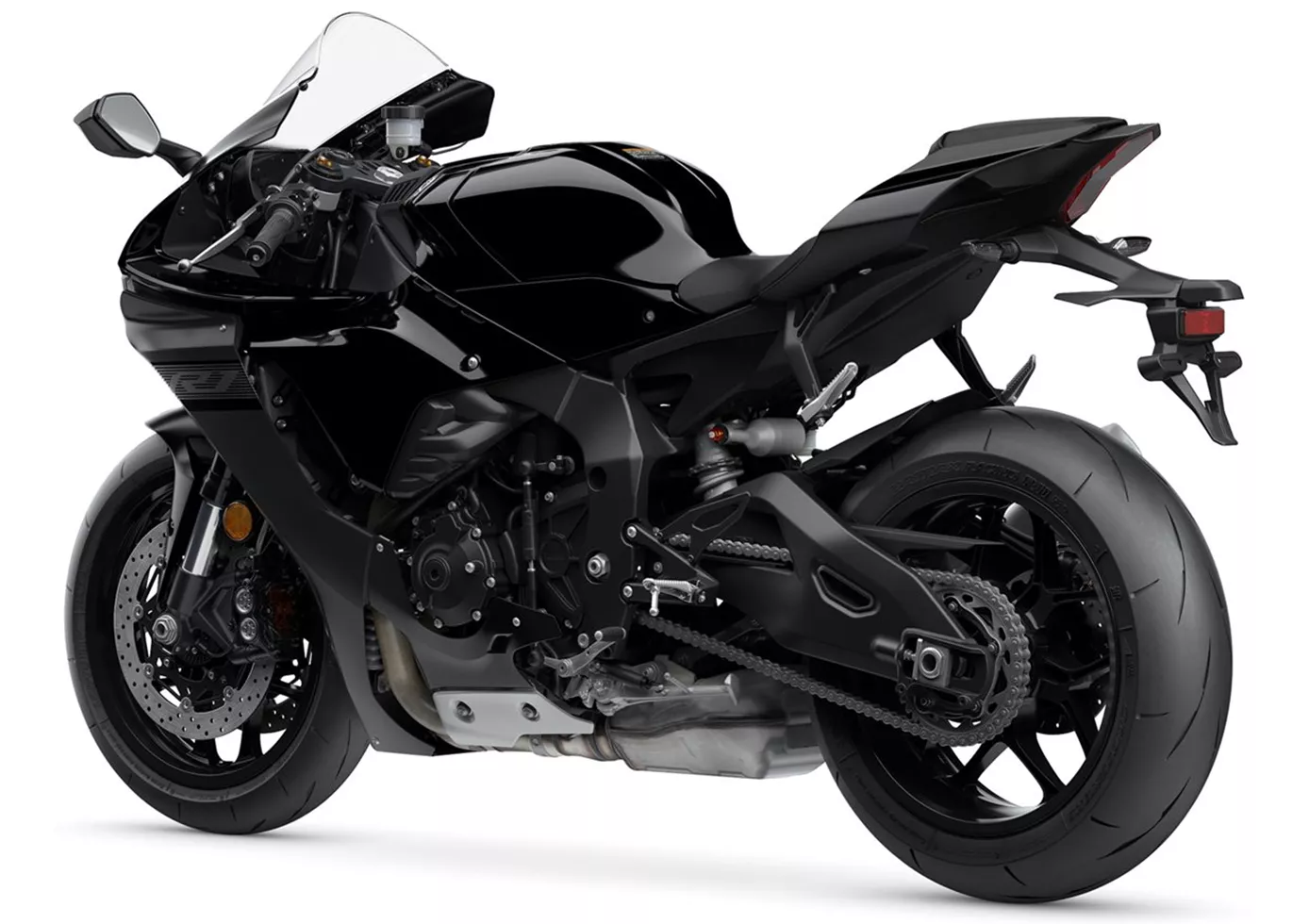
La Yamaha YZF-R1 est arrivée à maturité et fait le bonheur d'innombrables pilotes de circuit. Le moteur brille par sa légèreté et son agilité, la position de conduite surprend positivement et la maniabilité est radicale mais toujours "adaptée à la masse". La machine attire immédiatement l'attention par son aspect et aussi par sa sonorité qui fait chaud au cœur. C'est surtout sur les routes de campagne que la moto marque des points avec les atouts qu'on lui connaît : super moteur, super électronique, super ensemble ! Un vrai plaisir de conduire !
Comparaison des prix Prix moyen du marché Yamaha MT-09 vs Yamaha R1
There are a few key differences between a Yamaha MT-09 2017 and a Yamaha R1 2020. In terms of price, the actual average price of a Yamaha R1 2020 is about 161% higher. A Yamaha MT-09 2017 experiences a loss of 810 USD in one year of ownership. This is offset by a loss of 1,240 USD for a Yamaha R1 2020. Compared to Yamaha R1 2020 there are more Yamaha MT-09 2017 bikes available on the 1000PS.de Marketplace, specifically 10 compared to 9. It takes less time to sell a Yamaha MT-09 with 73 days compared to 86 days for a Yamaha R1. Since model year 2013 1000PS.de editors have written 57 reviews for the Yamaha MT-09 and 80 reviews for the Yamaha R1 since model year 2005. The first review for the Yamaha MT-09 was published on 6/10/2013 and now has more than 39,900 views. This compares to more than 3,900 views for the first review on Yamaha R1 published on 4/28/2003.

